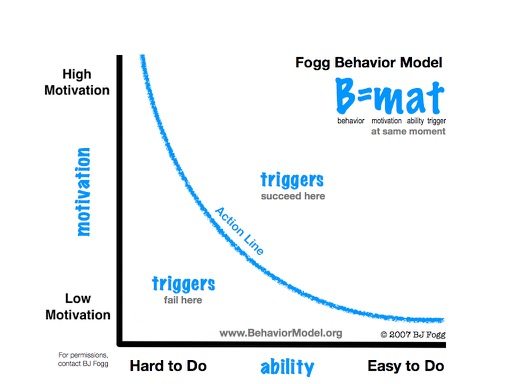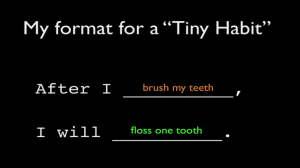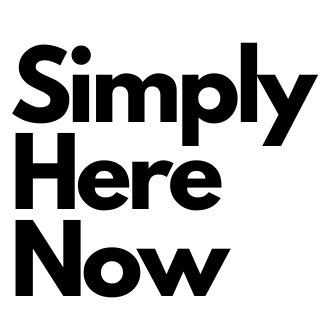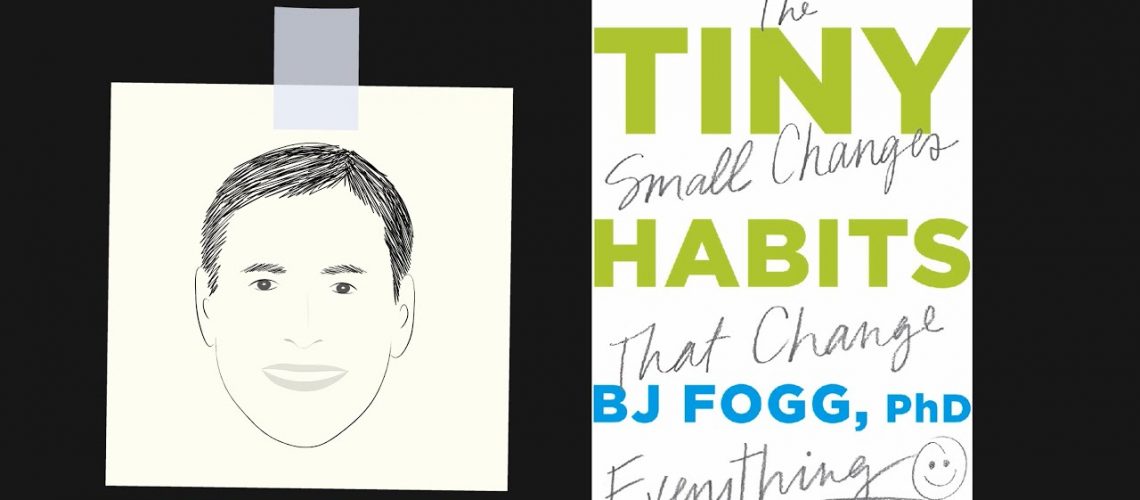The world’s leading expert on habit formation shows how you can have a happier, healthier life: by starting small.
In the following video by Productivity Game, you’ll learn the “Tiny Habits” method for making any new habit stick.
Key Takeaways
"I've found that there are only three things we can do that will create lasting change: Have an epiphany, change our environment, or change our habits in tiny ways."
Fogg has discovered the universal formula for human behavior.
B = MAP
Behavior = Motivation + Ability + Prompt
This formula says that if you’re trying to develop a new habit, like reading a book every night before bed, you’ll only pick up a book and start reading it tonight if your motivation, your energy to read, matches the ability required to read, the time it takes to hit your daily reading goal, when the prompt to read is present. That is when you see the book on your nightstand before you go to bed.
The hack is called the Tiny Habits Method and it involves three parts.
The Tiny Habits Method
1. Shrink the Behavior
To understand how motivation and ability interact with one another, Fogg provides the following chart with the action line.
The action line says that if a task is too hard then you need high levels of motivation to rise above the action line and complete the task.
- Rescuing your child from a burning building is a hard thing to do, but a high motivation to rescue your child puts you above the action line and compels you to run into the fire.

Conversely if a task is easy to do, you need very little motivation to rise above the action line and complete the task.
- Brushing your teeth is easy to do, so it doesn’t matter if you’re exhausted just before bed when you’re reminded to brush your teeth, you do it anyways.
Relying on motivation to be there each time you want to execute a habit is a foolish strategy.
That’s why BJ Fogg suggests shrinking every new habit to the tiniest possible version so that very little motivation is needed to do it.
You can find the tiniest version of your desired habit by either reducing the quantity or doing just the first step.
- For example the tiniest version of a 60 minute meditation practice is being mindful of just one breath.
- The tiniest version of a daily planning routine is writing down one to do item on an index card and putting it in your pocket.
Your goal is to find a behavior that is easy to do in 30 seconds or less.
Right now think of a habit you want to form and then list a few tiny habits you could try out.
- For example if you aspire to work out more, the tiniest workout you could perform might be one push up or one squat or one yoga pose or one jumping jack.
Experiment with one or two tiny behaviors and see which one feels like a small win.
Different behaviors impact people in different ways. Once you’ve found the tiniest habit with the biggest impact it’s time for part two of the tiny habit method.
2. Identify An Action Prompt
There are three types of habit prompts (things that remind you to do your habit).
1. External prompts phone notifications or alarms .
2. Internal prompts thoughts and emotions that remind you to act.
3. Action prompts the completion of one behavior reminds you to start the next behavior
Most people use external prompts or internal prompts to trigger a new habit and that’s why most people fail to develop a new habit.
External and internal prompts are too easy to ignore. You can hit snooze on an alarm or ignore a feeling, but more importantly external and internal prompts are disruptive and demotivating.
- If an alarm goes off reminding you to take out the garbage while you’re watching a movie, you’ll probably get angry because you need to pause the movie, get out of your relaxing chair and put your shoes on to go outside.
Contrast that to an action prompt that uses the completion of one behavior to trigger a new behavior.
- If you use the end of cleaning your kitchen countertops as the prompt to take out the garbage, you can leverage the momentum you already have from being on your feet and walking around the kitchen and then walking outside.
That momentum is just enough motivation to get you over the action curve and since tiny habits can be completed in 30 seconds or less you’ll have many action prompts at your disposal because you can fit tiny habits after almost any routine throughout the day.
- For example you can execute a one breath meditation habit after you check your phone or pick up the tv remote or turn off a light or wash your hands after using the bathroom.
Here are a few action prompts that BJ Fogg uses:
- After I start my morning coffee I will set out my vitamins.
- After I walk in the door from work, I will get out my gym clothes.
- After I sit down on the train, I will open my sketchbook.
- After I put my head on my pillow, I will think of one good thing.
Now go back to your tiny habit and set up an action prompt by completing the sentence:
After I blank, I will blank.
3. Grow Your Habit With Some Shine
Developing a habit is like growing a small tree.
You start with something tiny and you nurture it until it starts to take root in your life and feels natural.
Then if you continue to nurture your habit with some shine, that habit will naturally grow into something huge.
- Your sentence a day habit might grow into a three chapters a day habit.
Shine is a term that BJ Fogg created to explain the feeling you get after an accomplishment.
The closest thing in English language is authentic pride.
To get an idea of what shine feels like, imagine the following:
You’ve just gone through three rounds of intense interviews for a job you really want at a company you really like.
You wait and wait for the email from the hiring manager and then finally a week later you see an email in your inbox from the hiring manager.
You open it and read congratulations we’ve awarded you the position.
What does your celebration look like and feel like?
Or imagine you’ve worked hard on a school project and your favorite teacher walks up to you and puts his or her hand on your shoulder and says, “great job.”
How do you celebrate in that moment?
The feeling you experience after either of these visualizations is the same feeling you must generate after executing a tiny habit.
Now it may sound ridiculous to feel pride and success after just one push-up or flossing just one tooth, but based on Bj Fogg’s extensive habit research, learning to celebrate after a tiny win is the most critical component of habit development.
Think of yourself as part dog trainer and part dog. Your inner dog performs the habit and your inner dog trainer chooses to give the dog a treat.
Most of the time we hold back those treats because we think we should only celebrate huge successes, but that’s a huge mistake.
Fogg says when you feel successful at something, even if it’s tiny, your confidence grows quickly and your motivation increases to do that habit again and perform related behaviors.
I call this success momentum. Surprisingly enough this gets created by the frequency of your successes, not by the size.
When you give yourself a steady dose of shine after doing the tiniest version of a habit, your motivation will steadily grow, which will allow you to take on more difficulty while still remaining above the action curve.
This is how you grow your habit from one push up a day to 5 to 10 to 20.
"You can resist learning to celebrate (small completions), but be aware that you're choosing not to be as good as you could be at creating habits. For most people, the effort of learning to celebrate is a small price to pay for becoming a Habit Ninja."
1. Shrink a new habit to the tiniest version an easy behavior you can complete in 30 seconds or less.
2. Set an action prompt to trigger your tiny habit so you start your habit with momentum.
3. Always celebrate the completion of a tiny habit. The more you celebrate, the faster you’ll be able to grow your habit.
It’s important to remember the way to sustain a habit is to give yourself the flexibility to always do more, but permission to always go back to the tiniest behavior.
"While small might not be sexy, it is successful and sustainable."
Forget Big Change, Start With A Tiny Habit
BJ Fogg Ted Talk
Key Takeaways
Change is easy if you use Behavior Design. Willpower is fickle and finite, and exactly the wrong way to create habits. You transform your life by starting small and being flexible.
What if someone told you to floss only one tooth every day? Or start the new year, not with grand resolutions, but with a simple challenge…like ONE pushup a day? BJ Fogg shows us that the key to lasting change does not lie in planning big, monumental changes, but in thinking really, really small.
The Einstein of Behavior Science, Fogg guides you to find the small changes that can change everything in your life. In the Tiny Habits Method, you don’t set goals or track your behavior, or even need to be super motivated. Instead, you learn the powerful skills of change.
Fogg’s research shows that transformation happens when we feel good about our successes instead of feeling bad about our failures. With Tiny Habits it is easy to succeed and surprisingly fun to change.
Goals are harmful unless they guide you to make specific behaviors easier to do. Don't focus your motivation on doing behavior X. Instead, focus on making behavior X easier to do.
If you design for the outcomes (weight loss, healthier etc.), you’re designing at the wrong place. You need to design for the behaviors that lead to the outcome (eating less, diet, exercise).
Most behaviors that are needed to accomplish the desired outcome are habits. Out of the 15 ways to change behaviors, the number one is habits. Putting together little by little, these tiny habits will create long term change.
Behavior and changing behavior is not as complicated as people think, it’s systematic. There are 15 ways behavior can change and only 2 of those are long term.
3 things that have to happen at the same moment to change behavior. There has to be some level of motivation. The ability to do it and a trigger or call to action. (do push ups now, floss now)
Plant a tiny seed in the right spot and it will grow without coaxing.
1. Change your environment includes your social environment, reliable way, but it can be tricky.
2. Tiny changes very easy to repeat and make it into a habit. Training automaticity.
What Causes Behavior?
Motivation and ability are trade-offs and if you’re above the action line and the trigger occurs you will do the behavior. On the other hand, if you are below the action line and the trigger occurs you may fail. In order to do something difficult, you need high levels of motivation.
Motivation is very slippery because if you set yourself up to do something hard, and you need to sustain motivation, it will drop down and there will be a point where you don’t do it. Habits are about repeating it and you won’t create a habit if you’re not doing it.
Work on stuff that is so easy to do it doesn’t require much motivation at all. (make the behavior tiny) How do we trigger the behavior? After an existing behavior. If you use existing behavior in your life, make the habit after. (going to the bathroom, brushing teeth, get home.

Look at your life, look at what you want to change and break it down into tiny behaviors. Then put them in the right spot, which is right after something you are already doing. Allow it to grow. You don’t have to amp up motivation, draw up much from willpower. All you have to do is plan it out and let this natural process emerge.
Check out B.J. Fogg’s Tiny Habits program to learn more!


